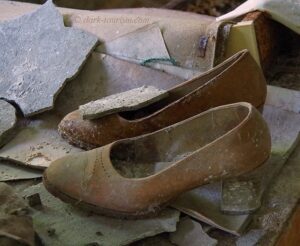Today is a day of special dark significance. For one thing it’s the middle day of the Mexican festival of the dead called “Dias de los Muertos”, a colourful fun event in which people dress up and wear skull-make-up and various festivities take place in cemeteries and so on. It actually takes three days, 31 October = All Hallows’ Eve (or Halloween), 1 November = All Saints’ Day, and 2 November = All Souls’ Day.
Here in Vienna, Austria, All Saints’ Day is a public holiday, but a much more low-key affair compared to Mexico. Many people visit graves of relatives in the various cemeteries of the city and lay flowers, wreaths or light little red candles. It’s the one day in the year when the city is very quiet while the cemeteries are at their busiest. I’ve never visited any cemeteries on All Saints’ Day, though some of the official ceremonies might be interesting to see. But it’s mostly a private affair and I don’t want to be intruding on that. I also prefer cemeteries quiet, ideally completely devoid of other people. And I like photographing in cemeteries and that’s better done unobserved.
So here I bring you a small selection of photos from Vienna’s most significant cemetery, the Zentralfriedhof, or ‘Central Cemetery’. It is so called not for its central location in the city (it is anything but!) but because it “centralized” burials in one large place far out on the outskirts of the city, a move brought about because the numerous small inner-city cemeteries became a health hazard. These days the Zentralfriedhof is one of the very largest cemeteries in the world. And for those into finding remarkable sepulchral art it’s a real treasure trove to explore; the variation of styles is quite stunning.
To begin with, there are those typical ‘mourning angel’ sculptures so characteristic of many Catholic cemeteries. Here’s a classic example:
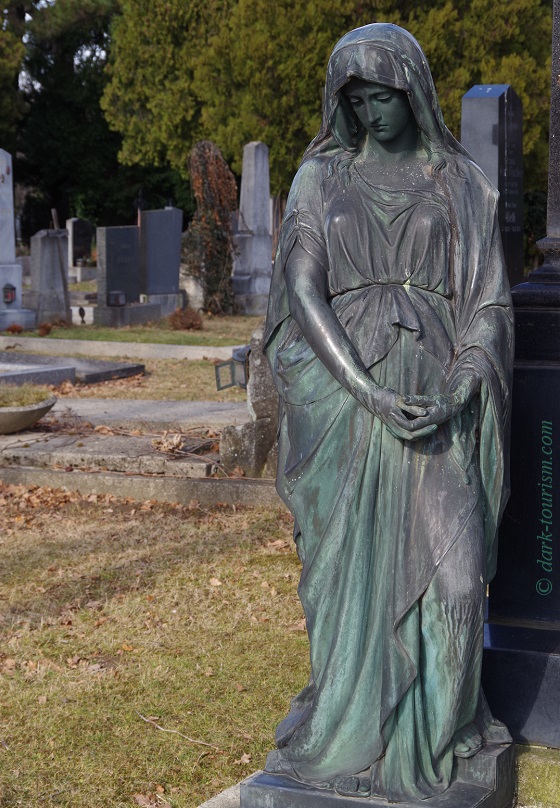
This next one looks especially mournful, and it’s reflected in the polished stone next to her as well:
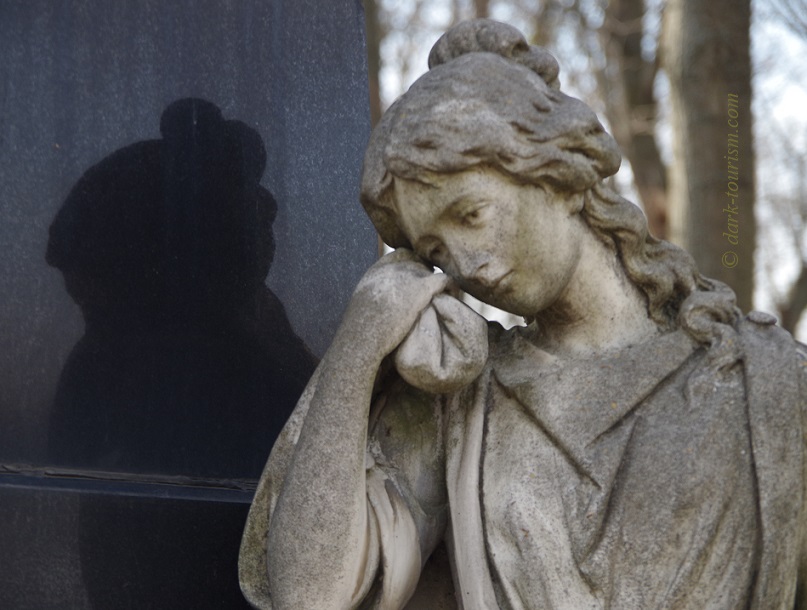
An especially beautiful example is also this one – part of a larger mausoleum. She looks like she’s studiously copying something out of her book and transferring it onto the stone. Note also the necklace she’s wearing. That’s obviously not originally part of the sculpture. Somebody must have put it on her:

A particular masterpiece, I find, is this fantastically realistic veil on a woman’s head, all made of stone – the transparency of the veil is a pure optical illusion, called “trompe l’œil” in art (same photo as the featured one at the top of this post):

Occasionally, the illusion is completely accidental, like in this growth of mould that gives the chin and cheeks of this stone angel a bearded look:
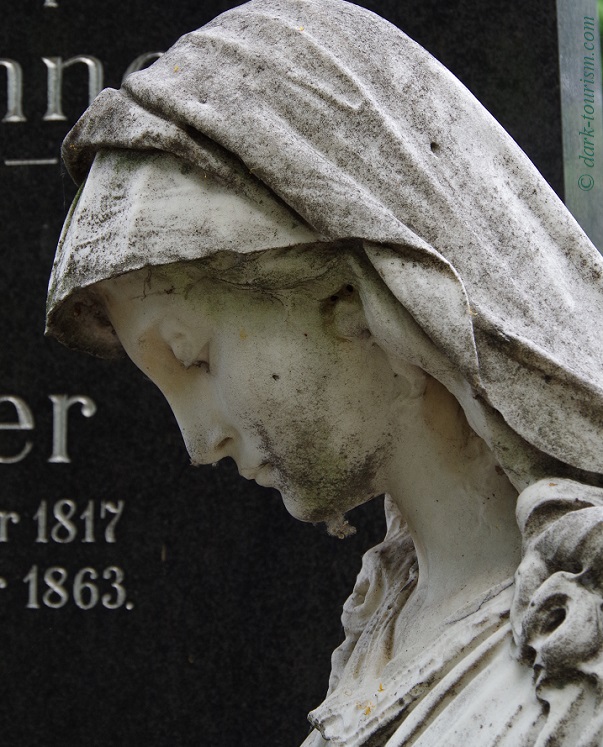
Other statues are quite deliberately very expressive, such as this mourning figure that looks absolutely inconsolable:
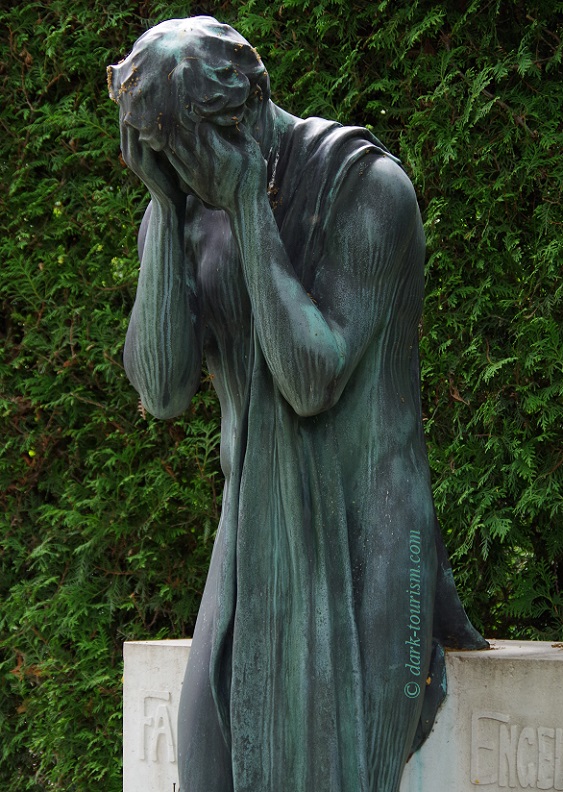
On other occasions the impression of a sculpture is severely altered through damage, such as in this toppled and partly broken (look at the fingers!) fallen Jesus statue:

Not all statues to be found in Vienna’s Central Cemetery are of classic design, though, quite a few are decidedly modernist. Here’s an example:

And if you think that chunky bloke looks weird, wait for the next photo:
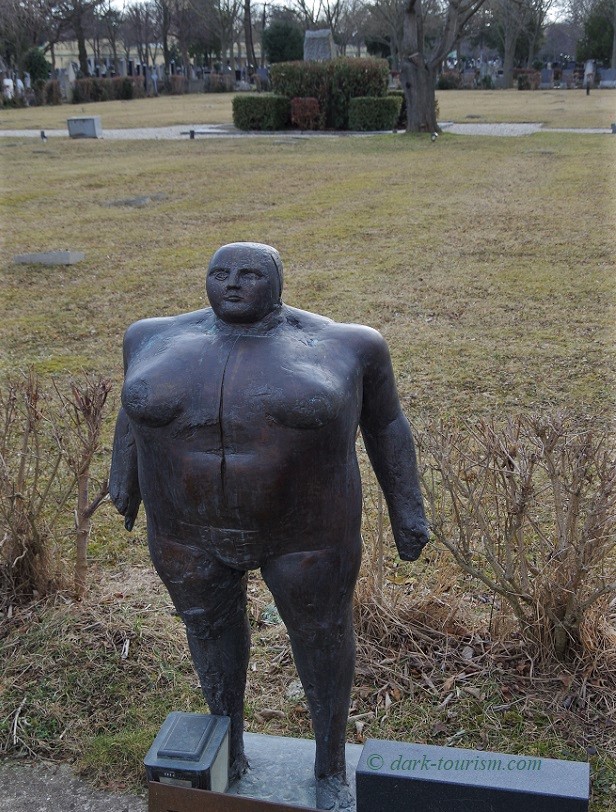
And it gets more extreme. Take a look at this monstrous sculpture that looks a bit like it’s jumped out of a H.R. Giger-designed “Alien” movie:
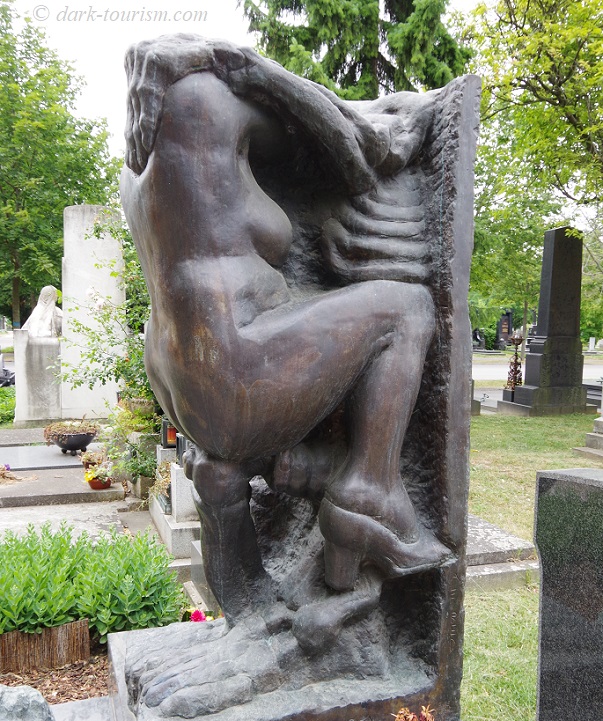
This is the grave of the first wife of the highly controversial artist Alfred Hrdlicka (1928-2009) – and this was in fact designed by himself, just like his own adjacent grave.
One of my personal favourite ensembles of sepulchral art in the Zentralfriedhof, however, is this darkly atmospheric one:
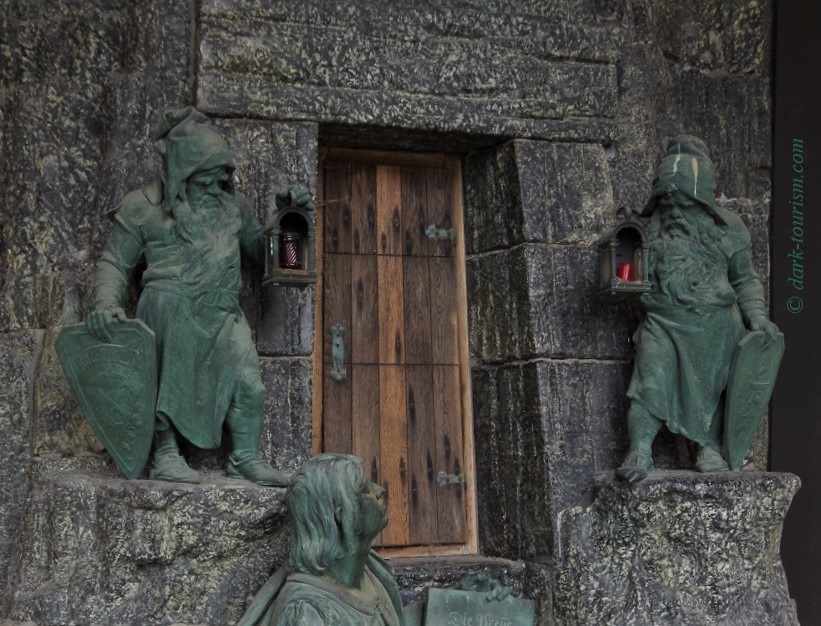
Just look at the grim expression of the two dwarfs “guarding” the door to this tomb. There’s a certain Tolkienesque atmosphere going on here!
Yet other tombs are designed in a totally abstract modern style, such as this one (don’t ask me what this is supposed to mean):
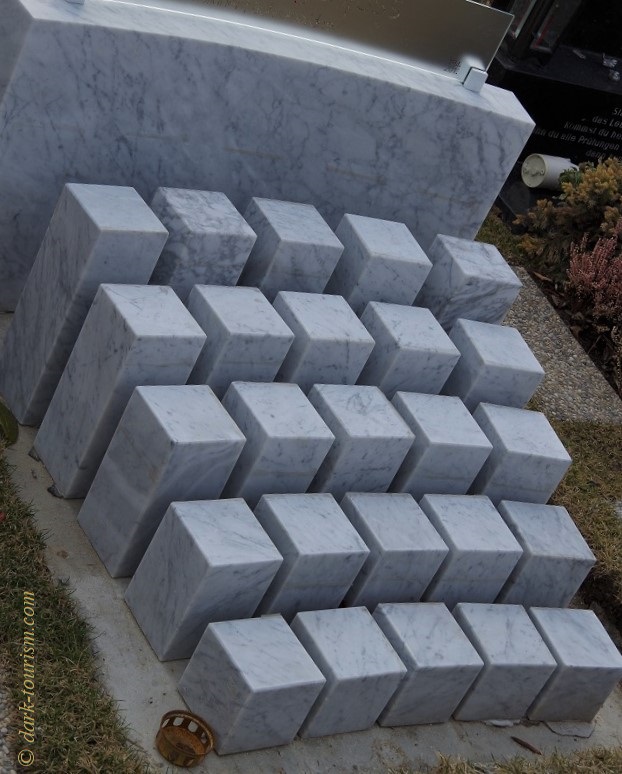
Sometimes the sepulchral artwork blends the three-dimensional with the two-dimensional, as in this rather Jugendstil-like (Art Nouveau) tombstone:
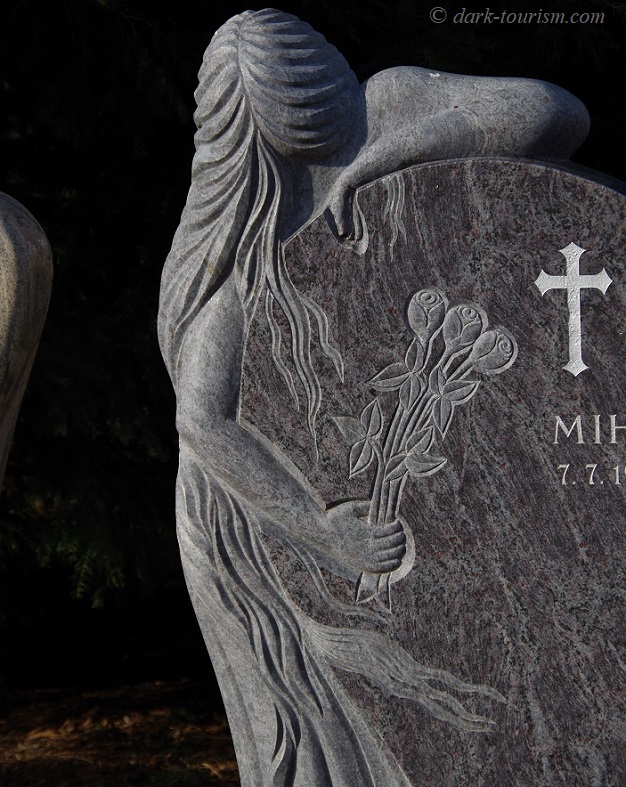
There’s a fair number of delightfully detailed bas-reliefs to be found here as well, such as this one that seems to depict the discussion between two scientists, maybe pathologists (note the two skulls):
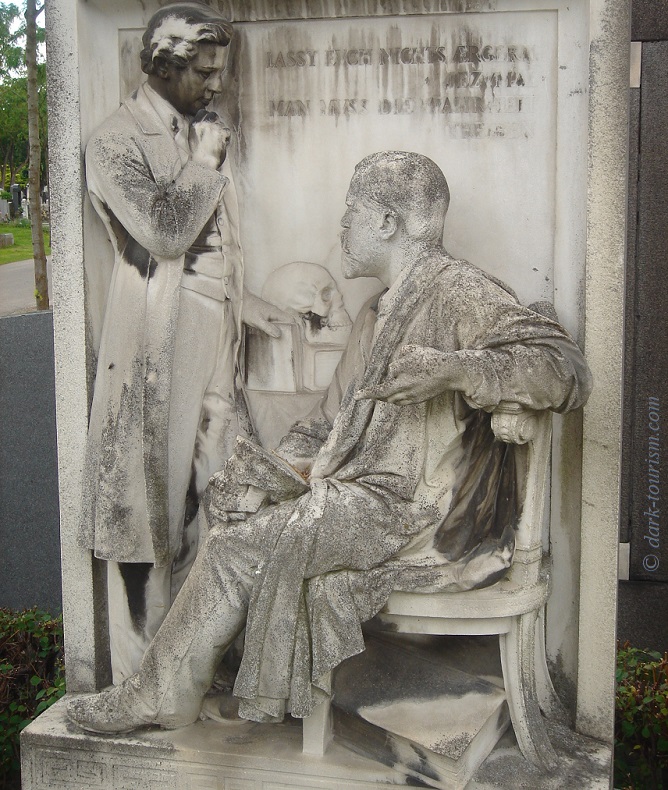
This next one also seems to follow a medical theme, and you have to wonder whether this is supposed to depict the moment a doctor declares the deceased dead, not having found a pulse any more:
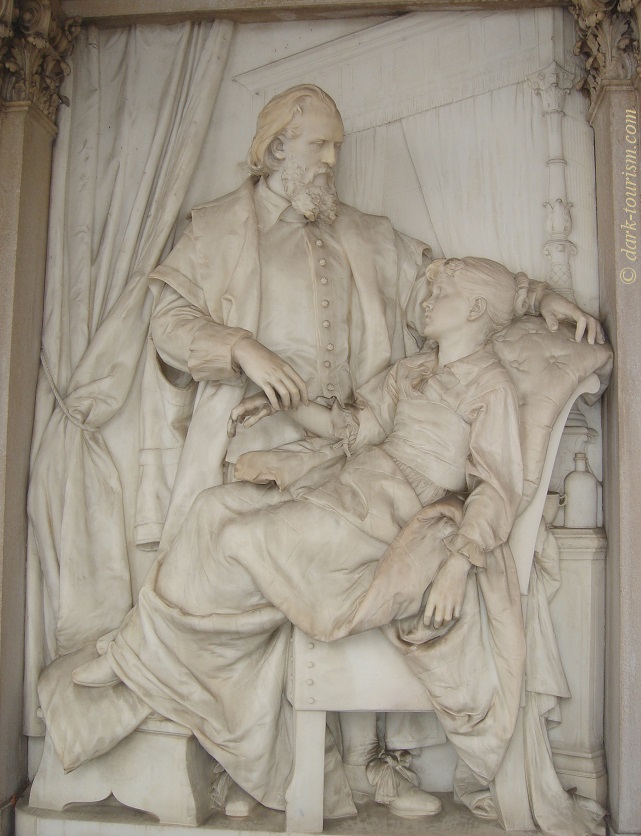
While some artwork invites fairly obvious interpretations, sometimes that is much less clear, such as in this bas-relief (I’ll leave it to you to find a plausible interpretation for this – I don’t have one):
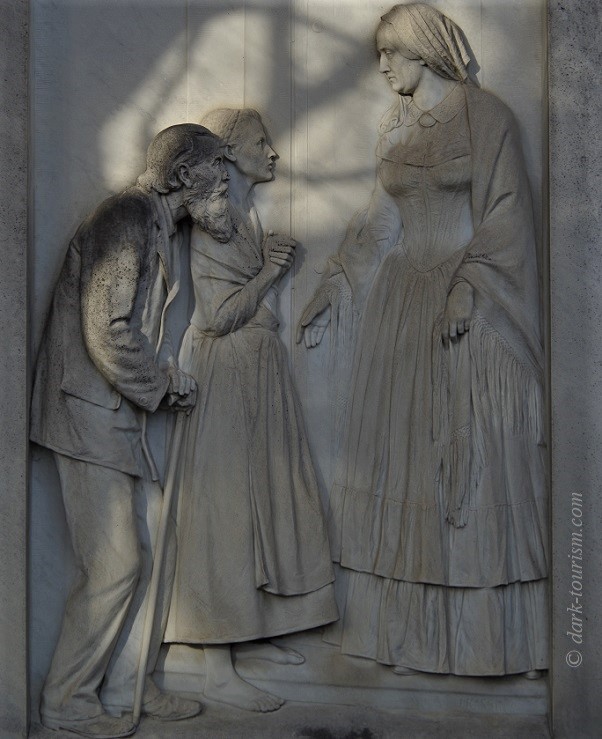
Some graves are particularly beautiful not just for the design alone, but also because of the interaction with nature, as in this atmospherically overgrown tombstone:

Many cemetery tourists specifically hunt down the graves of famous people. I don’t normally, I’m more interested in the sepulchral art and atmosphere rather than any dead-hero worship. But I’ll make an exception here, because this is not only the grave of the most famous pop export ever to have come out of Austria, namely Falco (real name Hans Hölzel), but also because his grave’s design is so unusual and as flamboyant as Falco was in real life:
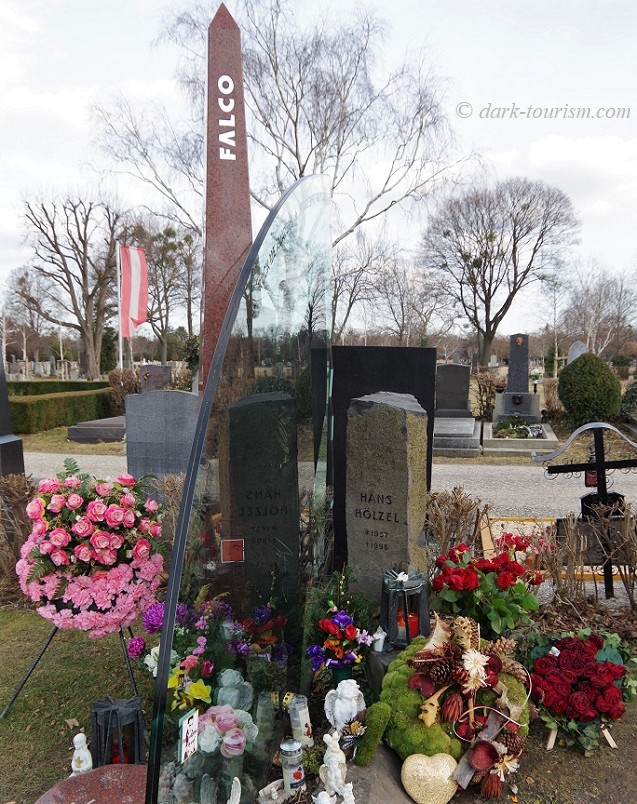
Note all the mementoes left at the bottom! He’s clearly still very popular. The central perspex glass plate in the centre, by the way, is supposed to be an allusion to a CD. On it are etched an image of Falco and the names of several of his hit singles, including of course his very biggest, “Rock Me Amadeus”. But I found another one of his titles (a later work) more fitting for our context:
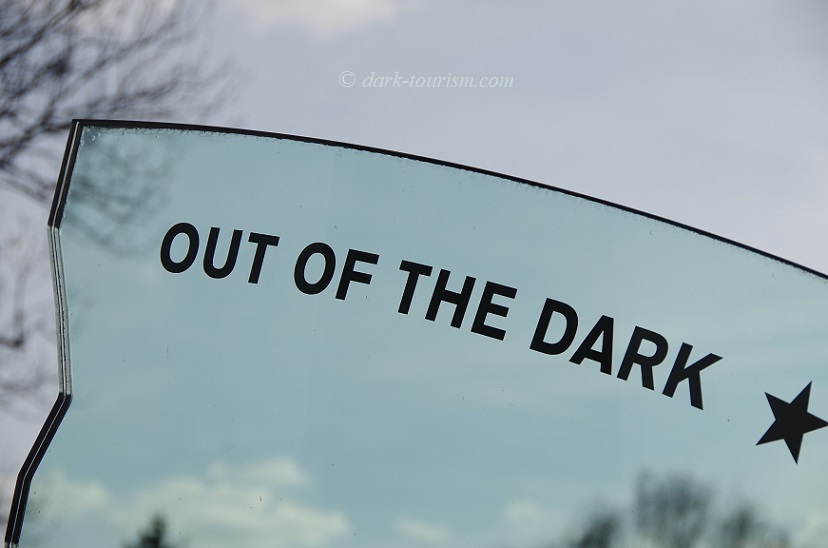
But back to more classic designs. The north-western old Jewish section of the Zentralfriedhof has some impressive Gothic mausoleums, such as this grand rotunda:
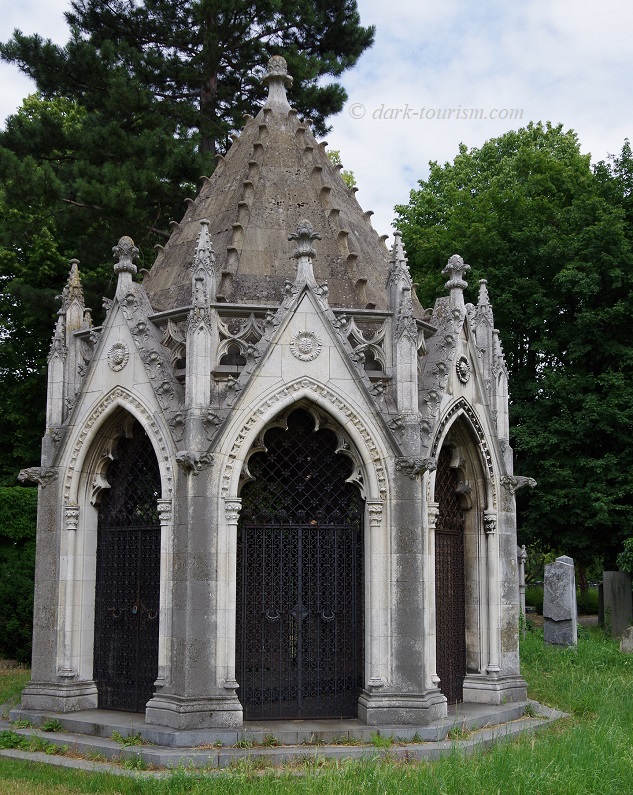
Also in the old Jewish section, which has been largely neglected since the Holocaust wiped out many families leaving nobody to tend to their relatives’ graves, is this mausoleum with its intricate wrought-iron gate:
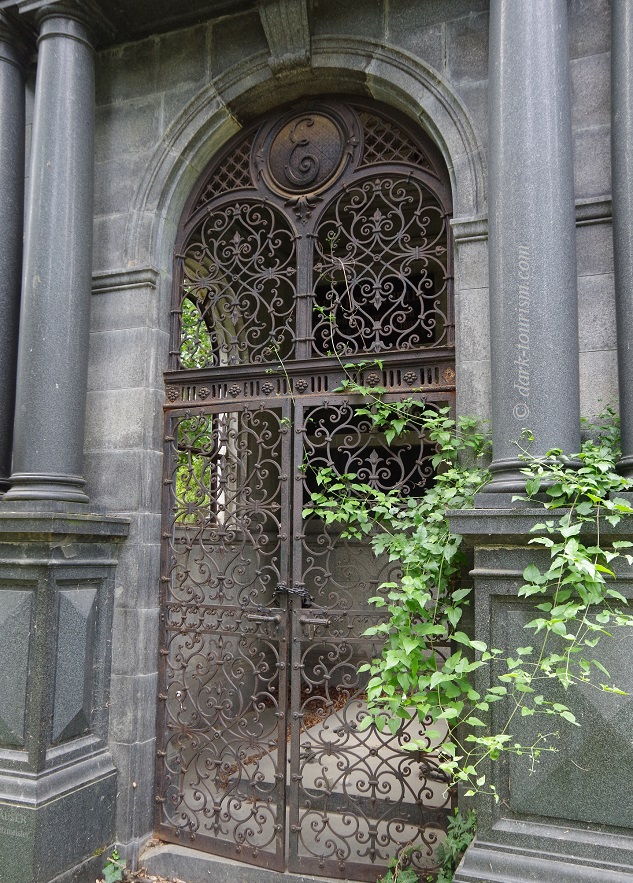
Sometimes it is not the artwork that makes a grave noteworthy, but the name on it, as in this rather unfortunate example of a tombstone for someone with the surname “Macho” (who may or may not actually have been a macho in real life):
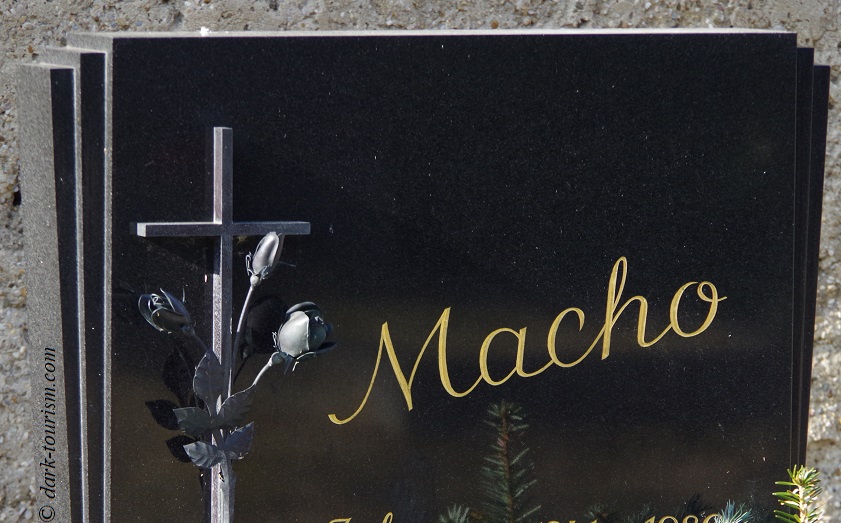
Another funny one I found is this:
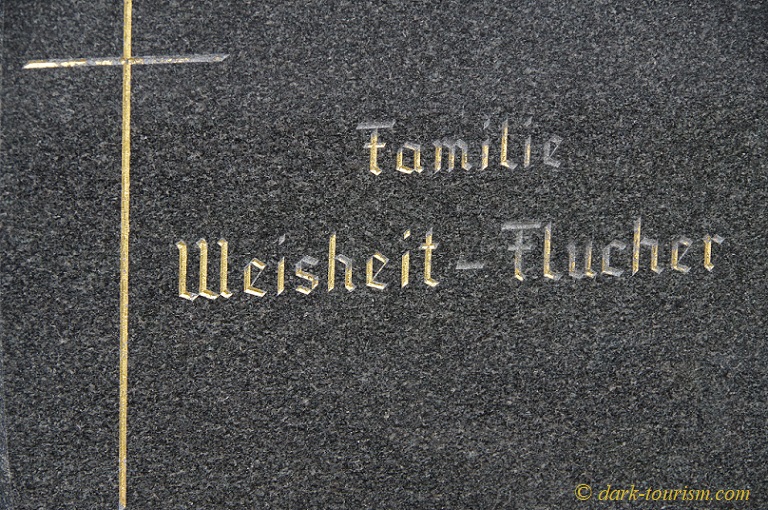
Here you have to know the German words “Weisheit”, meaning ‘wisdom’, and “fluchen”, ‘to swear’, so was this a family known for expressing morsels of wisdom in the form of expletives?
The Central Cemetery of Vienna is not only a cultural institution (there is even a pop song about it!), it is also a refuge for wildlife. Especially in the early morning or at dusk and after closing time, deer graze amongst the graves and you might be lucky and spot foxes and hares. I’ve never been so fortunate myself, but I managed to get this atmospheric shot of a crow on a tombstone. Also very Gothic!
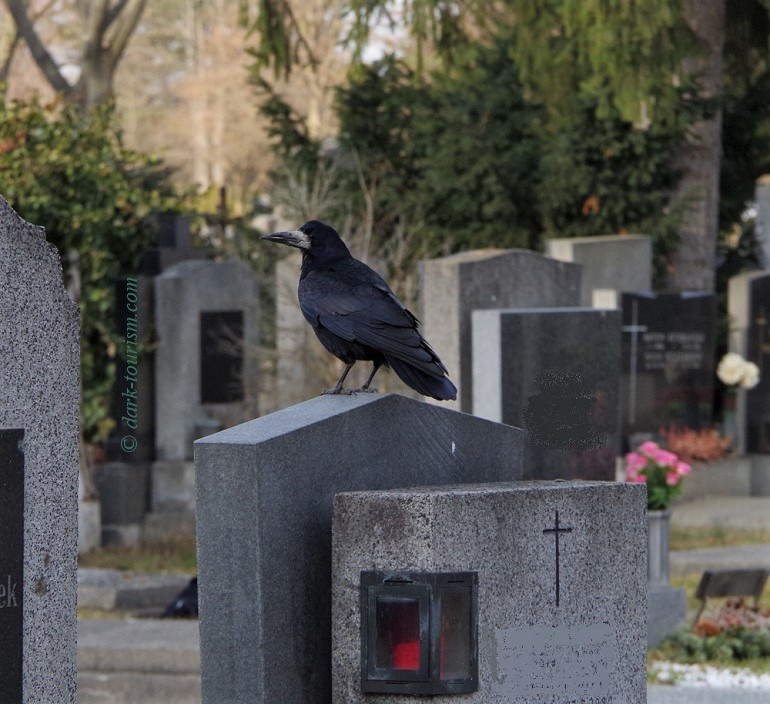
And finally, a photo not of any graves or sepulchral art in this cemetery but of a sign by a side exit, which I found involuntarily funny:
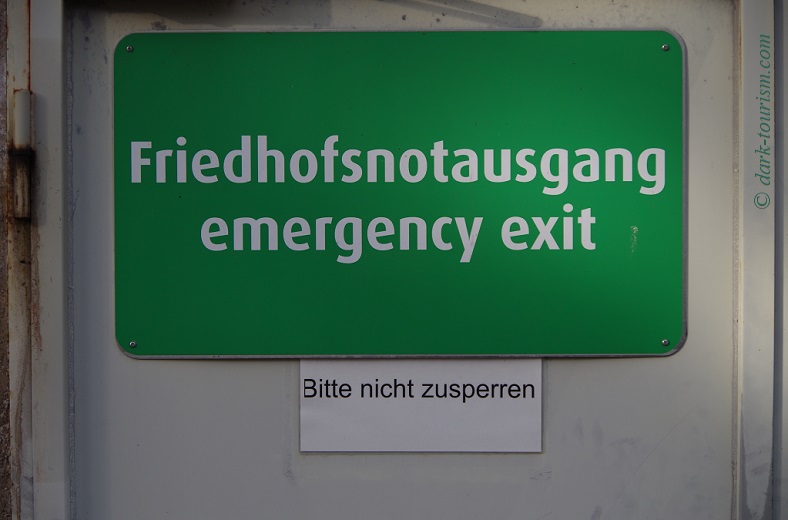
The extra sign underneath the “emergency exit” sign says ‘please do not lock’. The very fact that a cemetery should have an emergency exit made me chuckle. I interpreted this as allowing a deceased person the option of escape from the cemetery, in the event that person changes his/her mind about being here 😉
But in reality this is of course just for visitors who miss closing time. Since the area of the cemetery is so vast (there’s a bus line going round inside that has 19 stops!) it can happen that if you don’t monitor the time closely you can find yourself at one of the five main exits when it is already locked. In that case it is an emergency exit like the one with the sign above that would still let you out. But there would be no door handle on the outside, so you can only exit but not enter through this door.
But so much for the Central Cemetery and 1 November, All Saints’ Day. I now have to return to work on my main website.

